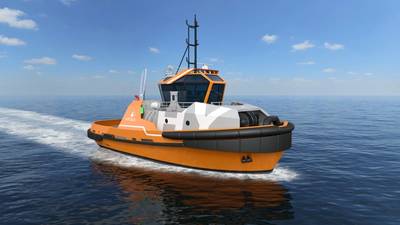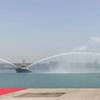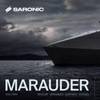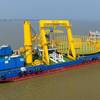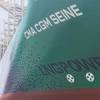Wärtsilä Developing Hybrid Tug for Brazil
Wärtsilä said it has signed a memorandum of understanding (MoU) to develop a new environmentally friendly tug design for a new port facility being built in the Brazilian city of São Mateus.
The MoU, signed with Petrocity, parent company of a new port facility, will see Wärtsilä develop a harbor tug design based on its recently launched Wärtsilä HYTug, which features hybrid propulsion and energy storage using batteries.
The prime consideration is to maximize the ecological operational sustainability of the vessel since the environmental demands of the new port are among the most stringent in the world, Wärtsilä noted.
According to Wärtsilä, the HYTug features a ‘first-of-its-kind’ fully integrated hybrid power module combines engines, the energy storage system and power electronics optimised to work together through a newly developed energy management system (EMS).
The fuel efficiency of this design has the added benefit of reducing exhaust emission levels. Furthermore, when operating in ‘green’ mode, it is unlikely that there will be any visible smoke from the Wärtsilä HYTug since the load is being picked-up by the batteries. At the same time, the noise level of the tug will be notably reduced.
“The Wärtsilä HYTug will change the landscape of the tugboat market as battery usage significantly increases environmental sustainability and operational efficiency, while at the same time greatly reducing operating costs. It represents further evidence of Wärtsilä’s leadership position in sustainable and energy efficient technologies,” said Mário Barbosa, Wärtsilä’s Marine Solutions' Sales Manager.
Petrocity CEO, José Roberto, said, “Green port operations are completely aligned with Petrocity’s corporate philosophy and values. We look forward to working with Wärtsilä in developing the kind of harbor tug that meets the criteria that have been established for this project. This will be the first of many others in a huge logistics project which aims at the regional integration of the Espirito Santo, Minas Gerais and Bahia states.”
The new hybrid vessel features a very distinctive outlook while providing the power and maneuverability for practical tug operations, Wärtsilä said. The overall design has been optimized for low hull resistance, high towing and escort performance, efficient sea-keeping, crew safety and comfort, as well as for easy maintenance.



